Nathan Jackson, Master Carver
/
Nathan Jackson makes some initial cuts in a cedar log.
Only 386 master artists in the United States have been honored with the National Heritage Fellowship award since 1982. Two of those artists live in the Ketchikan Gateway Borough, near the southern end of Southeast Alaska. Nathan Jackson is one of those two living treasures, working in Saxman Native Village, a few miles south of the city of Ketchikan. He was kind enough to talk to me and allowed me to take some photos to share with you.
Nathan Jackson is a Chilkoot Tlingit, a master carver, metalsmith, teacher, and fisherman. His works are in collections worldwide, including over fifty totem poles, as well as many carved wooden masks, screens, and crests. Nathan also engraves gold and silver pieces, forming them into jewelry.
Surrounded by works in progress, handmade carving tools and the aromatic scent of cedar, Nathan told me about the work going on in the Edwin DeWitt Carving Center. Reproductions of some of the older totem poles are being made, and there are new works, also.
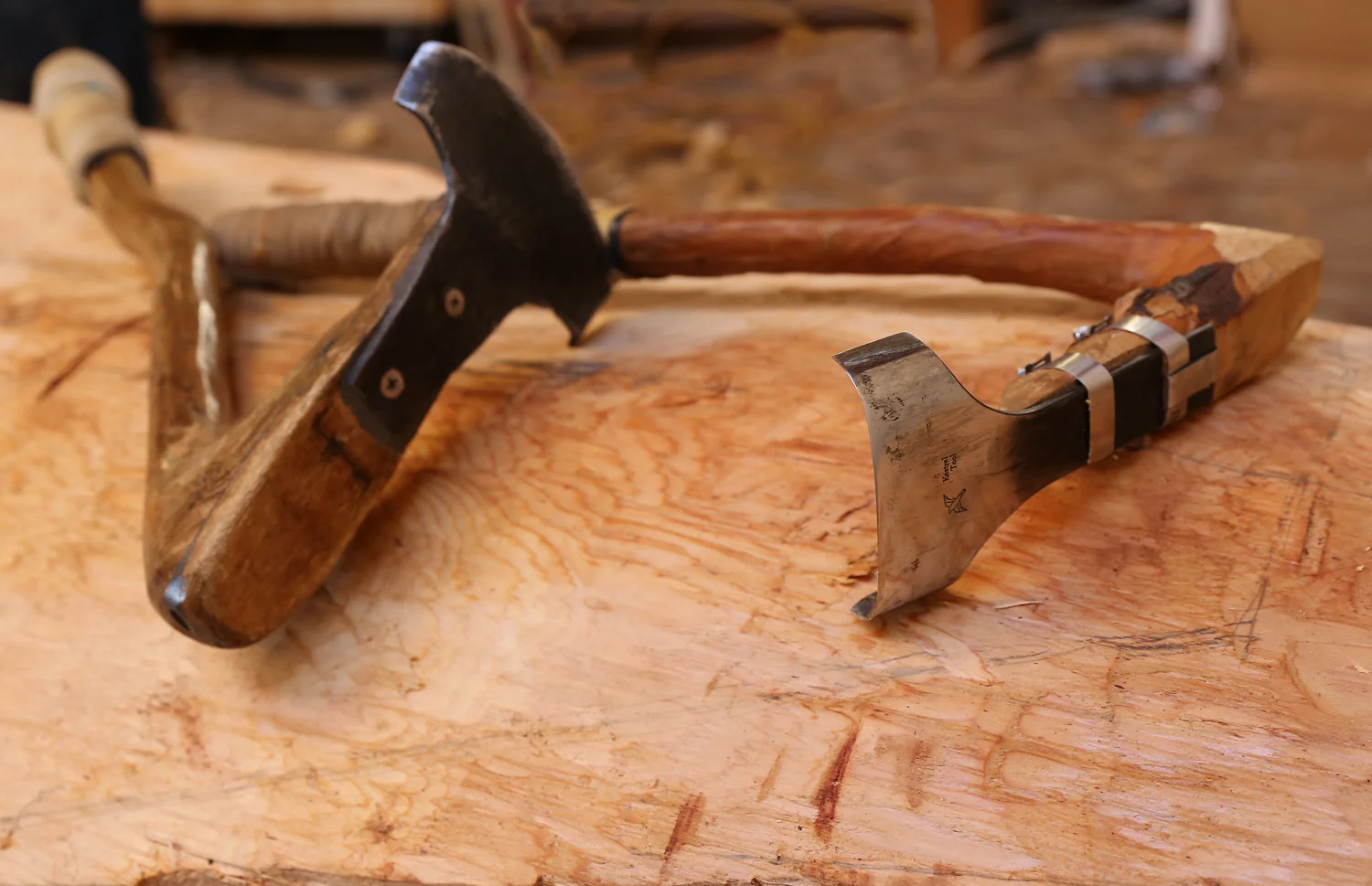
The adze head is attached to a handle made from a natural bend in an alder.
Nathan stresses that Alaska Native artists should understand and mind the traditional art form.
Traditional tools are used to create the works, but at times modern tools are utilized as well, to get the job done more efficiently.
The larger pieces such as totem poles are usually done in red cedar, and the smaller works are carved from yellow cedar and alder.
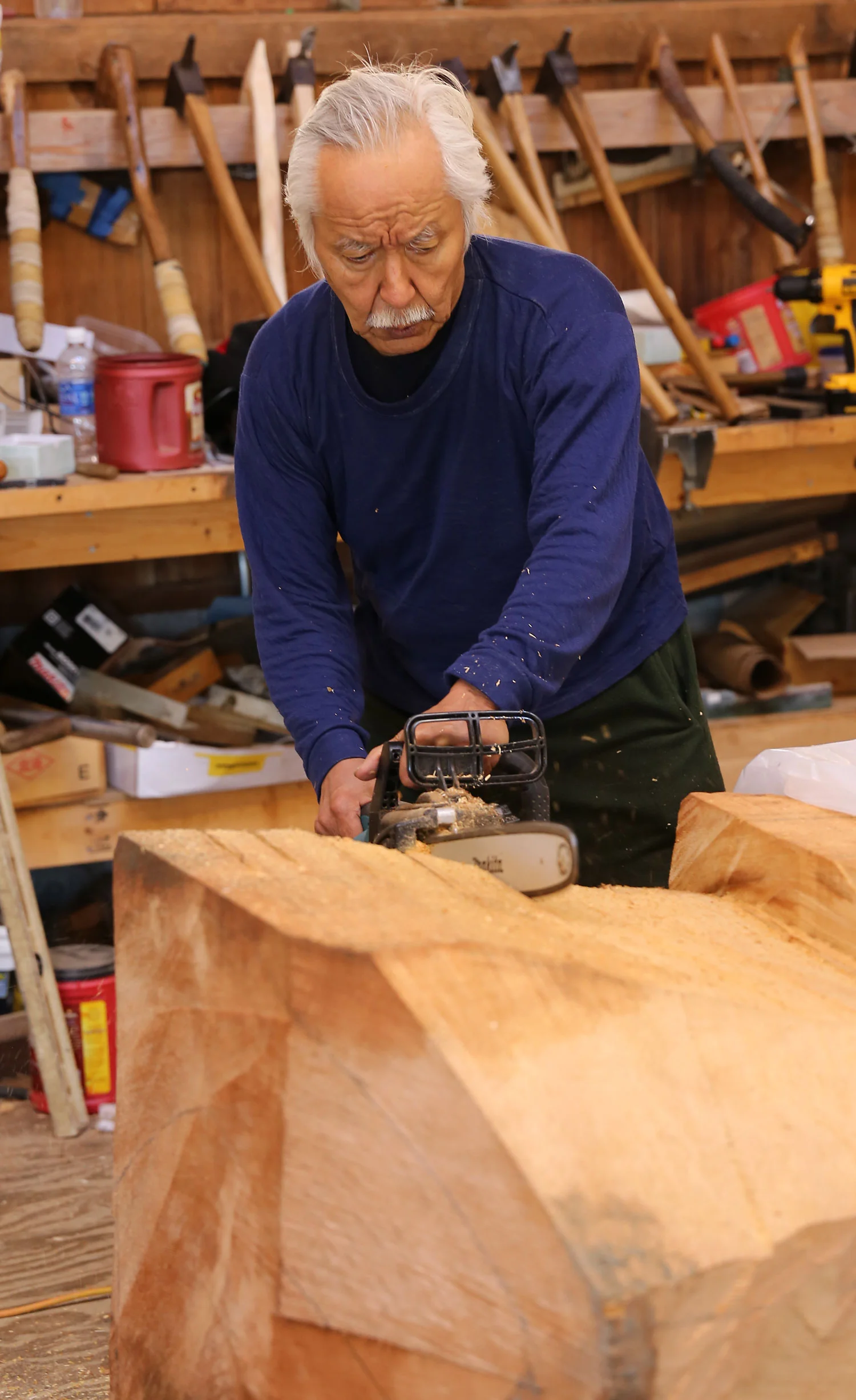
Nathan Jackson makes sure cuts with the chainsaw.
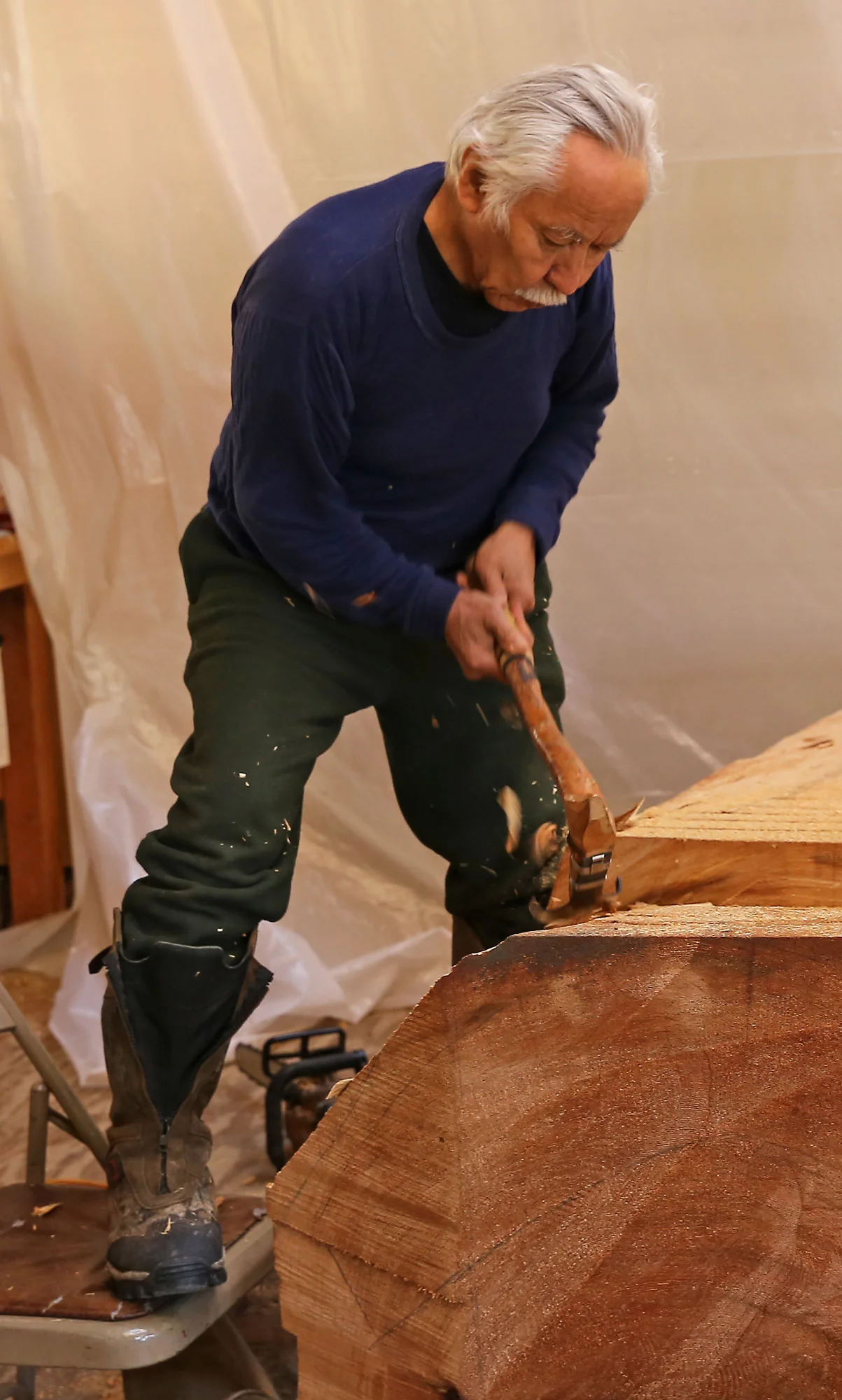
Chips fly as Nathan removes material with the adze.
Nathan talked about artists who are interested in creating Tlingit art. He said that they should carry a sketch pad, because being able to draw is the first thing that a person should master. They should be able to critique their own work, and align it with traditional art. He spoke of concentrating on the work, and not allowing distractions from things like cell phones to interfere. He also made it clear that alcohol is not allowed in the carving shed.
“I think if you are drawing, if you look, if you study the artform, if you try to copy something, the best thing to do is just get a sketch pad,” Nathan chuckles then, “and an eraser.”
He also noted, “There are no shortcuts.”
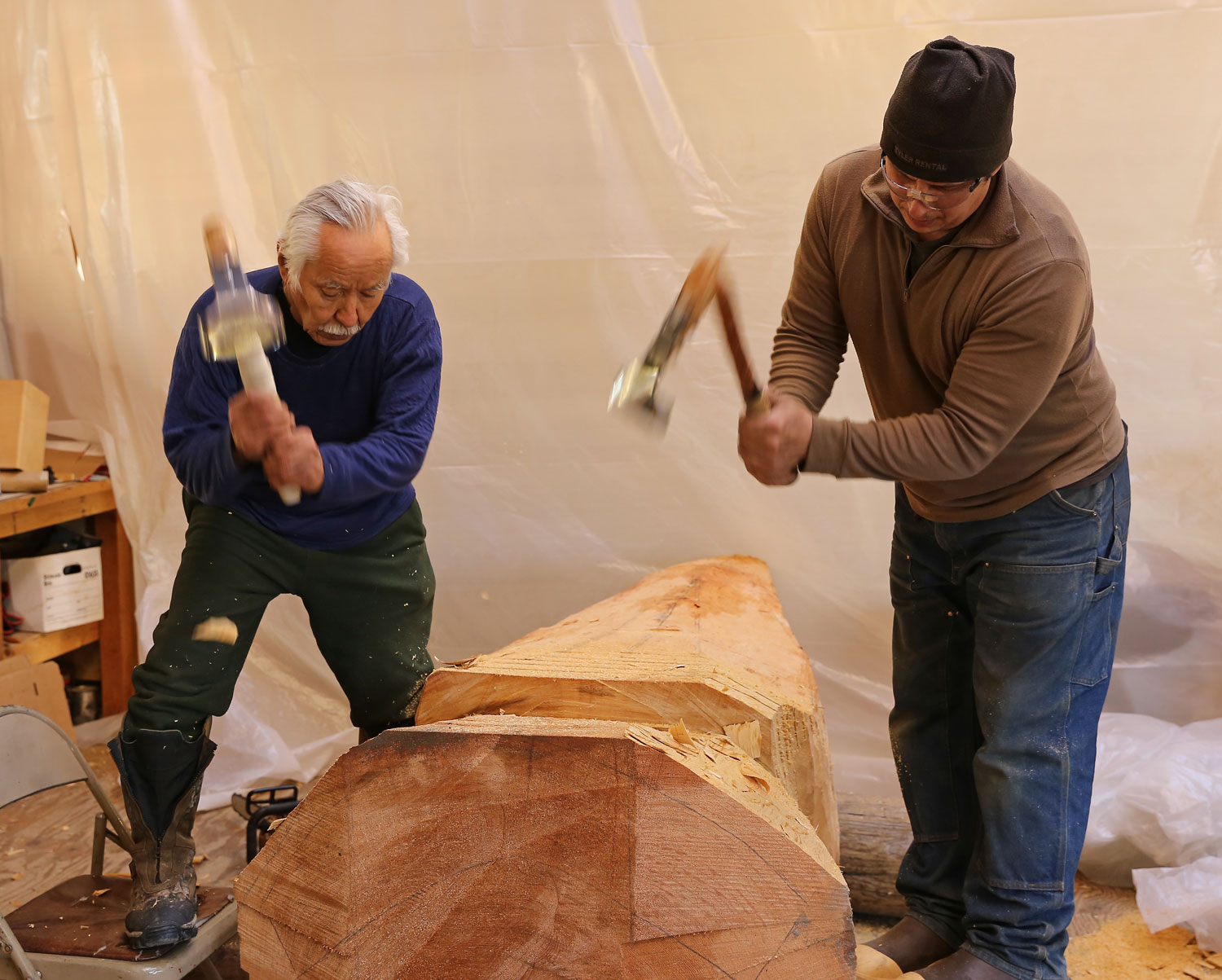
Nathan Jackson and John Hughes using adzes to shape a cedar log into a totemic sculpture.
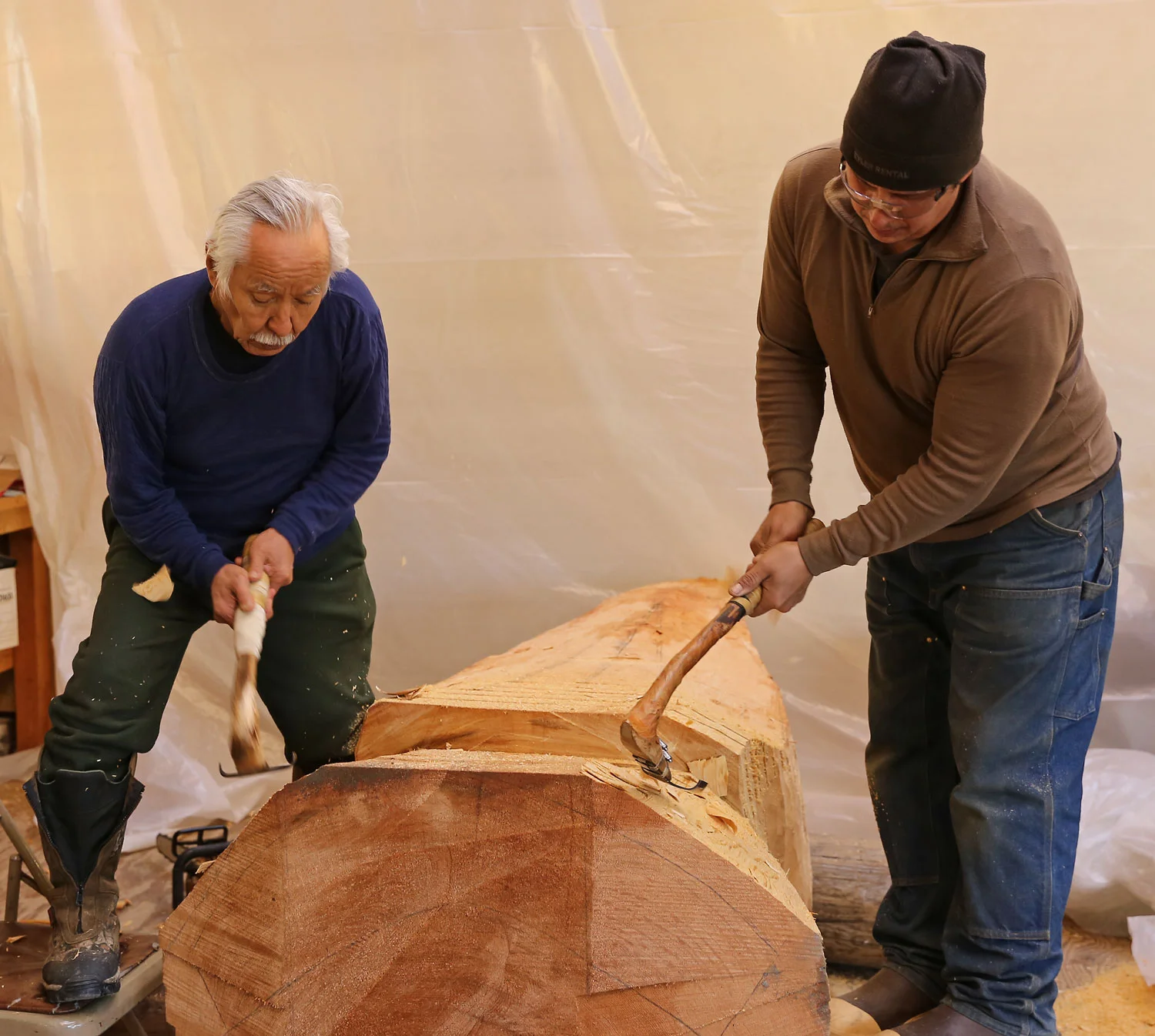

Donald Varnell and Nathan Jackson measuring and marking.
There are several large projects in the carving building, and three artists working there. “Thundering Wings” is a Tlingit carving that Nathan originally made for the City of Ketchikan in 1993. It had deteriorated in the rainy Ketchikan weather. The original carving, with the wings removed, stands beside the carving-in-progress. Nathan Jackson, John Hughes, and Donald Varnell are reproducing the artwork.
Careful measurements with a variety of calipers are made to check that the work is symmetrical. A charcoal line is drawn to indicate that a quarter inch be taken off of one side of the tail section. Donald picks up a slick and expertly removes exactly the right amount of wood. Each of the carvers made fine adjustments using tools capable of quickly taking far more material.

Donald Varnell uses an adze to refine a form as Nathan Jackson watches. They are reproducing the eagle carving "Thundering Wings" in the background. The eagle's wings were removed to transport it to the carving shed.

John Hughes carves with a slick while Donald Varnell and Nathan Jackson make marks to note adjustments.
In the Saxman carving shed there are sounds of tools on wood, the radio playing in the background, a few quiet words about a measurement or checking that the carving is level, and the work moves steadily forward. If any hierarchy exists in the carving shed it was not apparent; I saw and heard mutual respect and a sharing of knowledge in all directions.
Hey, Thank You Nathan, John, and Donald!
There will be photos of totem poles in Saxman and Ketchikan in the next post.
Be well everyone,
Alaska Beachcomber
For more posts on Alaska Native Culture click here!
Note: Article updated 3/24/14 with thanks to David Landis. Comments, additional information, and corrections are always welcome!

